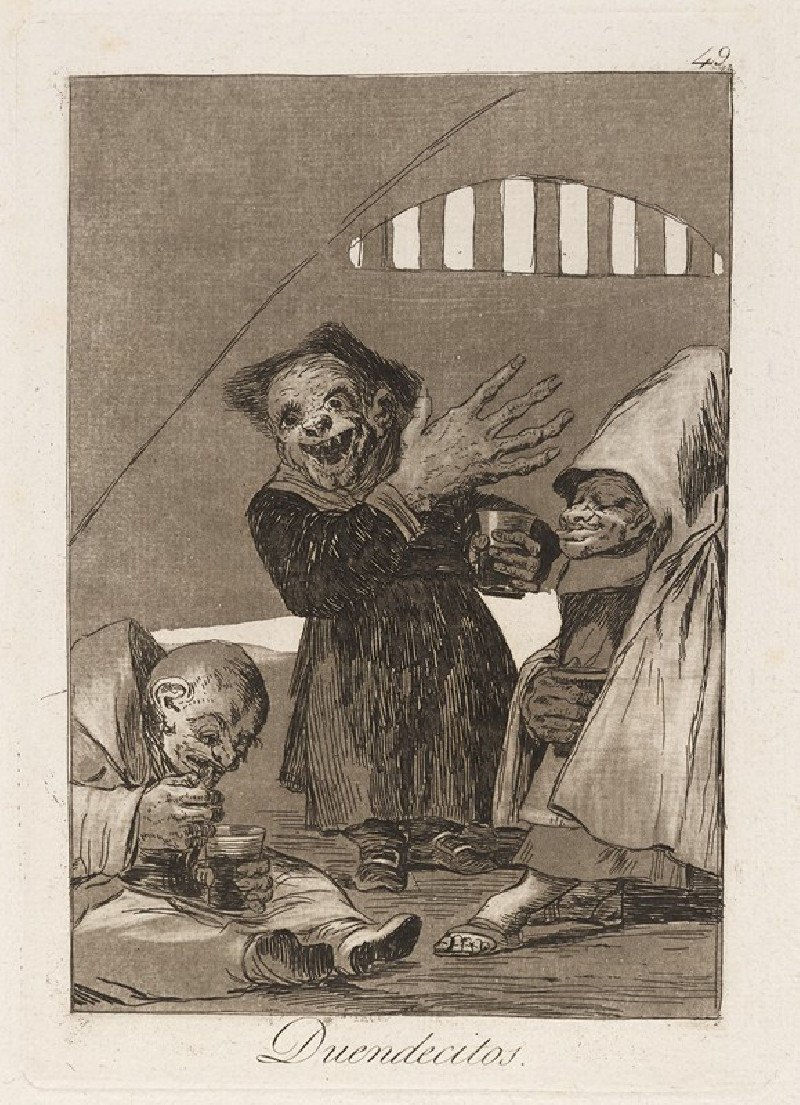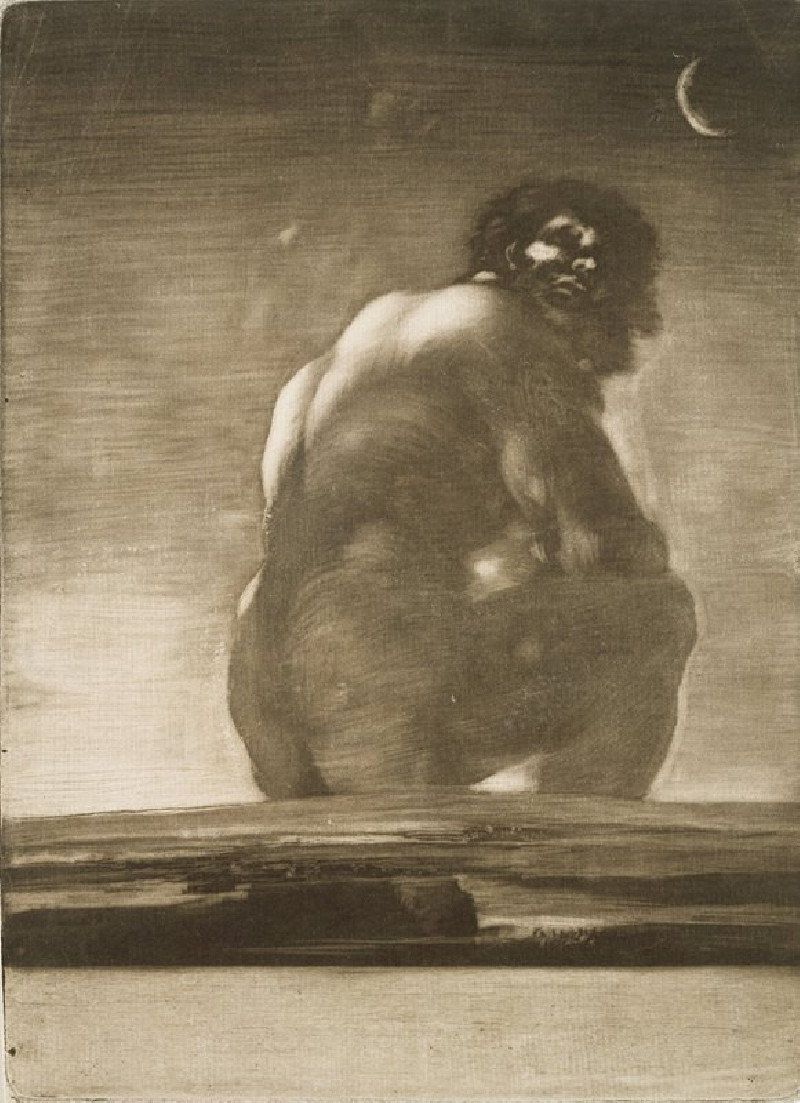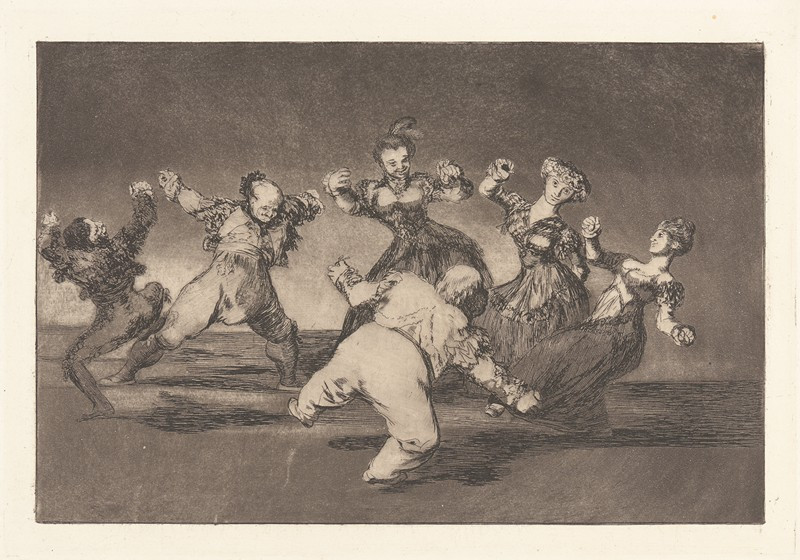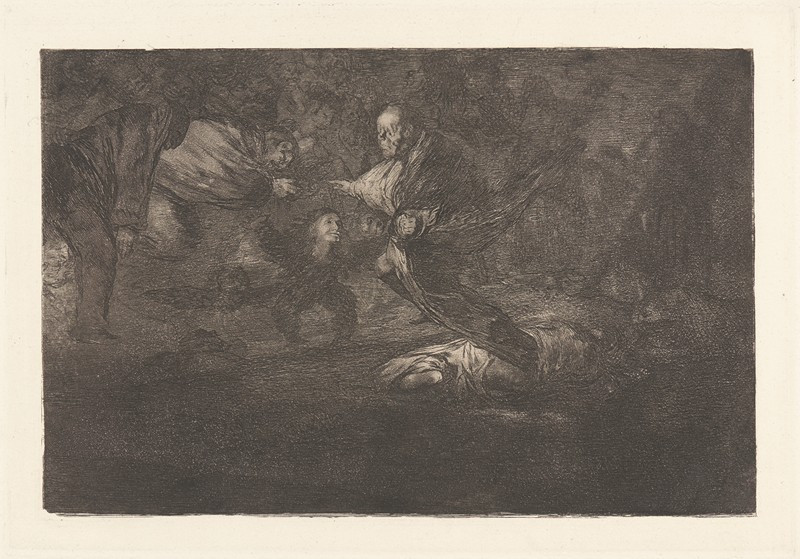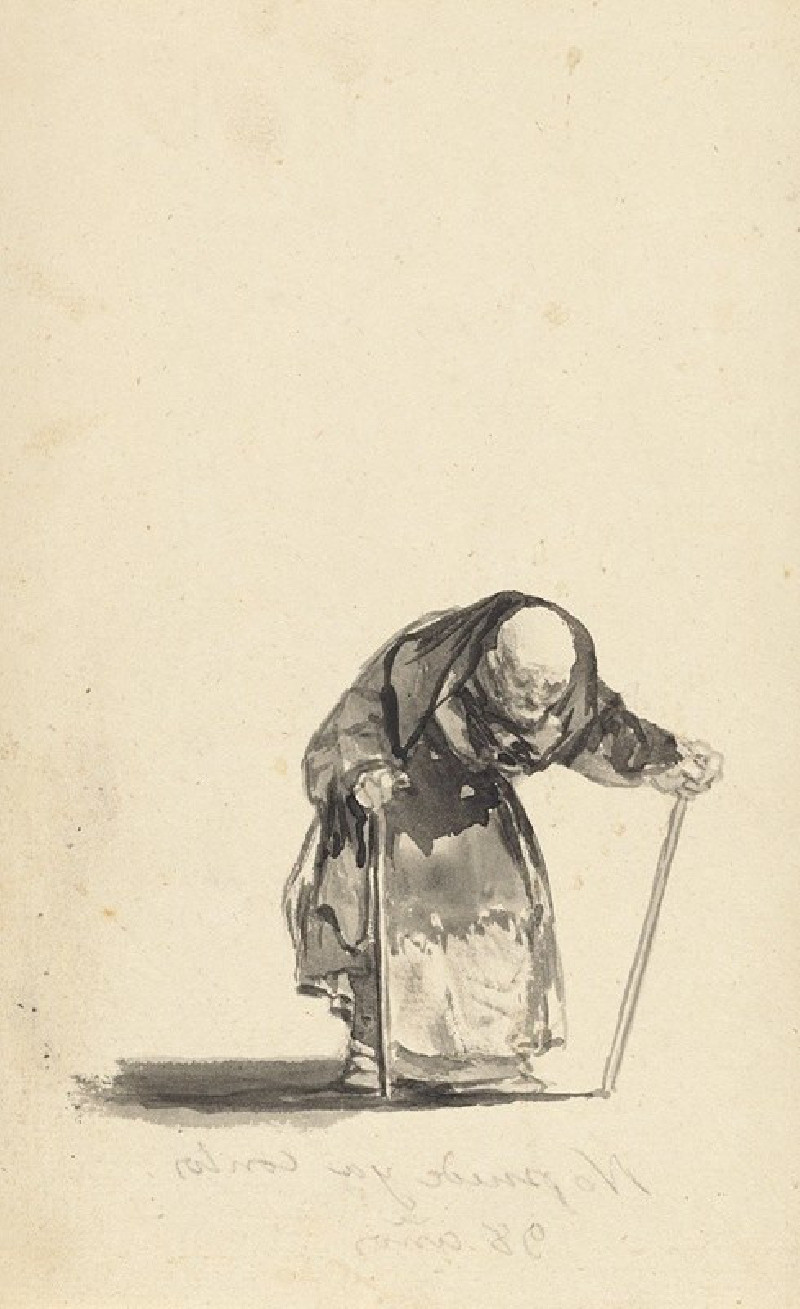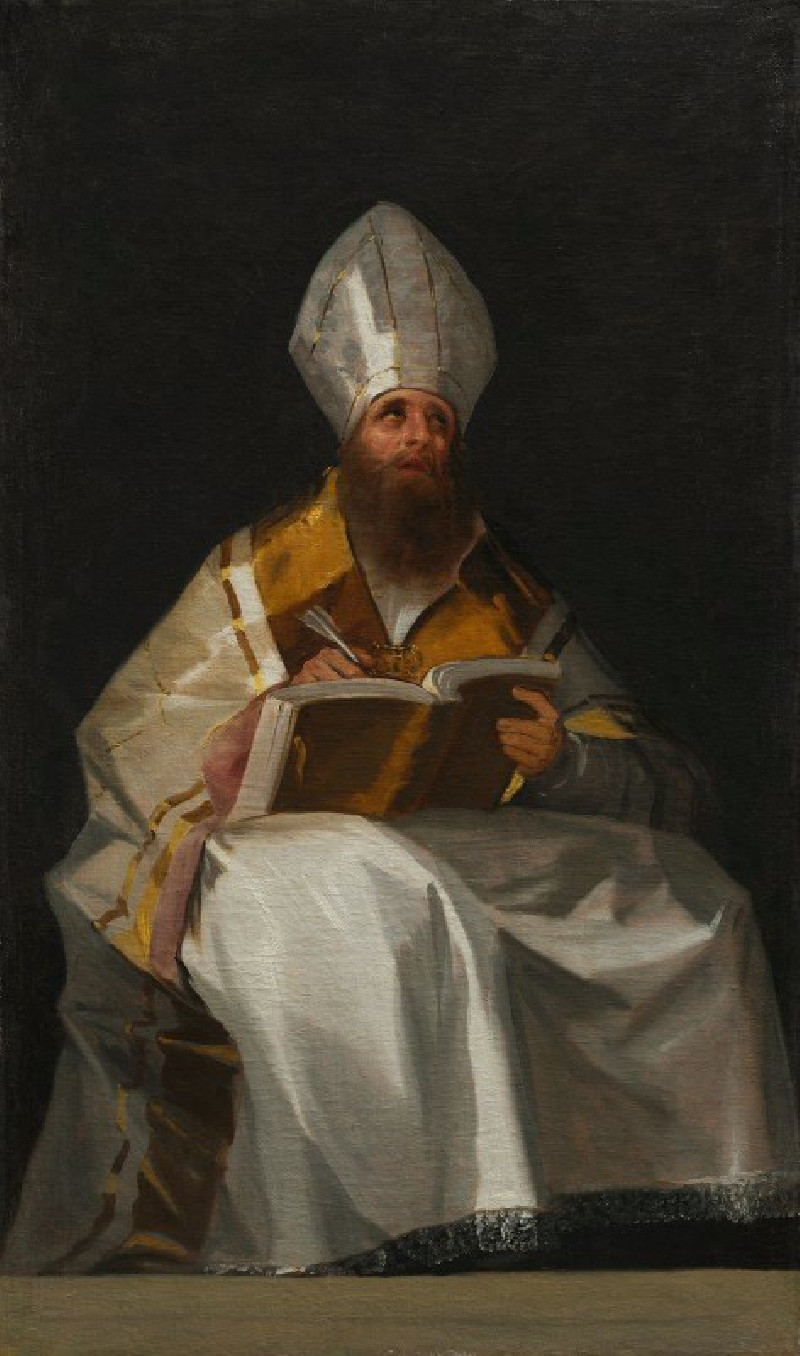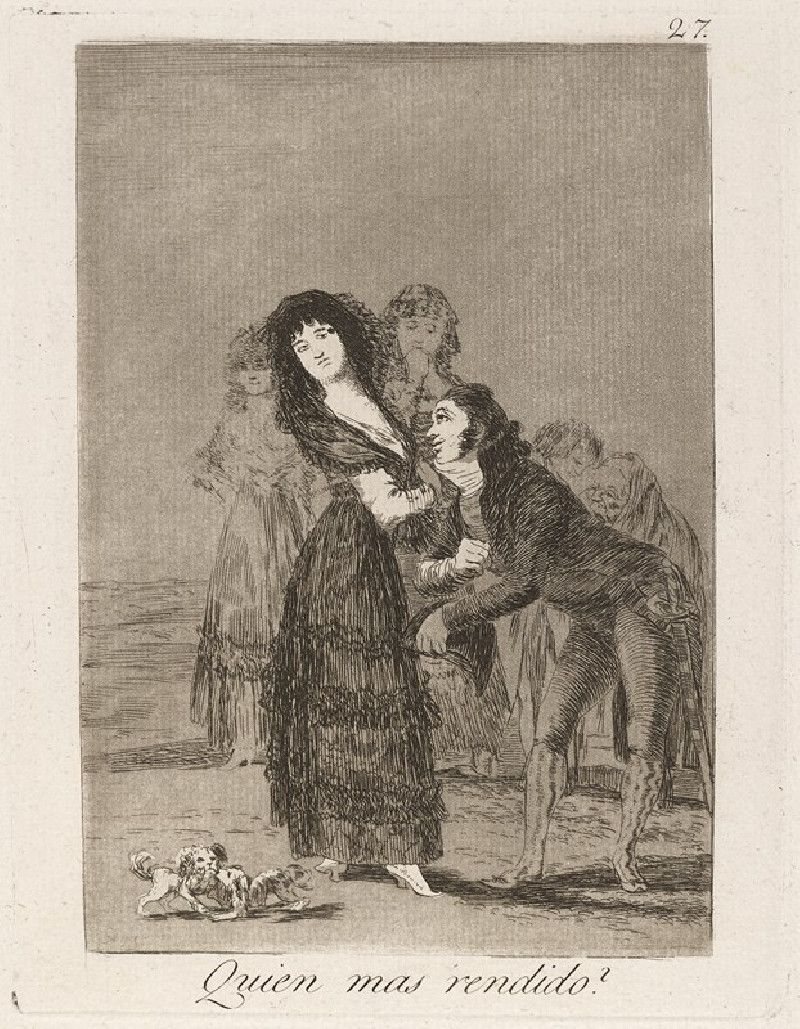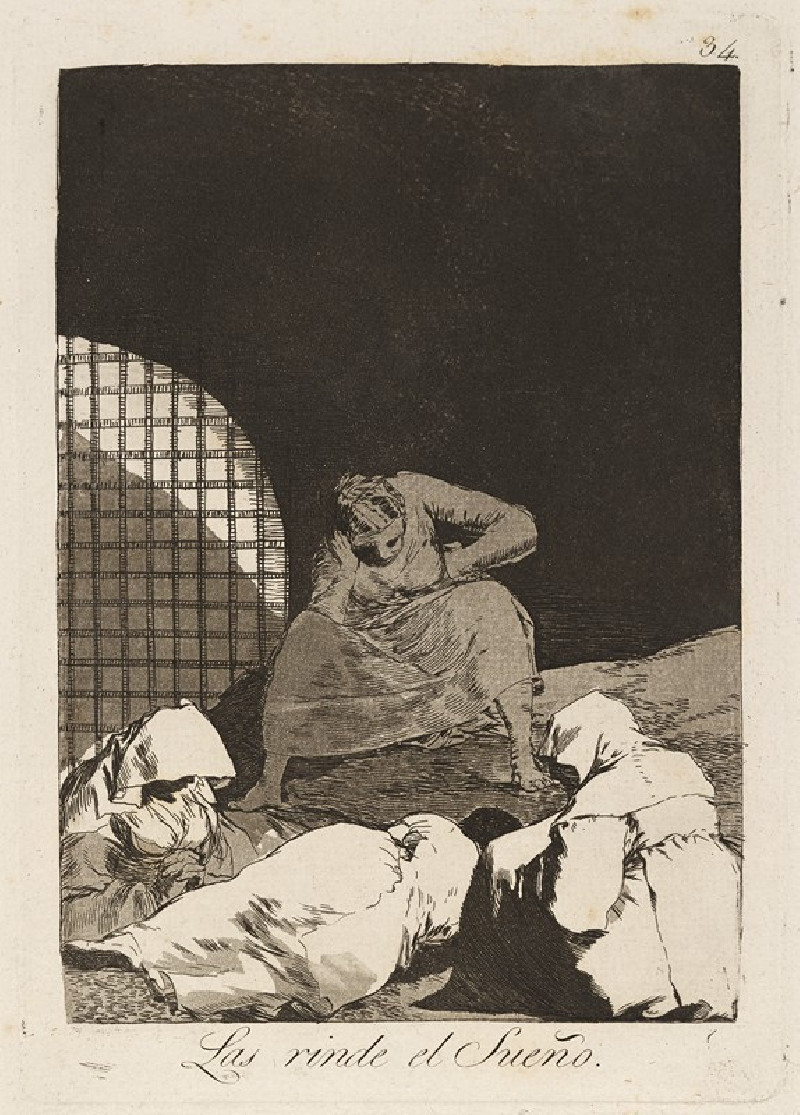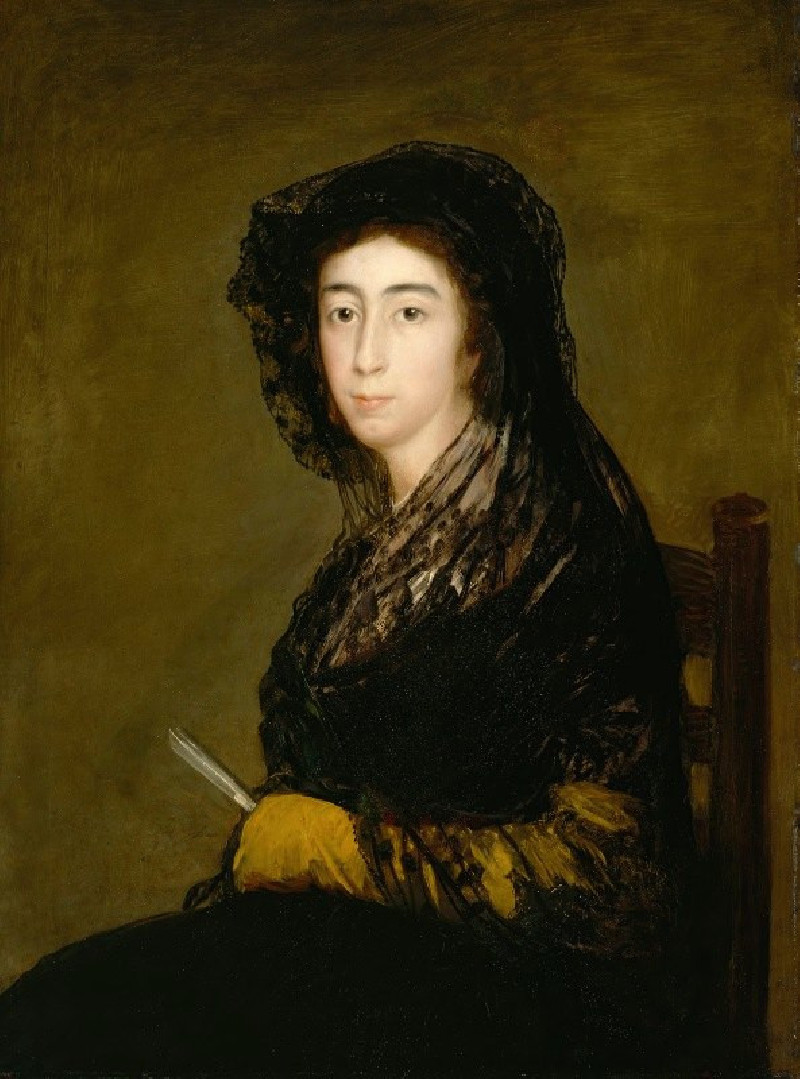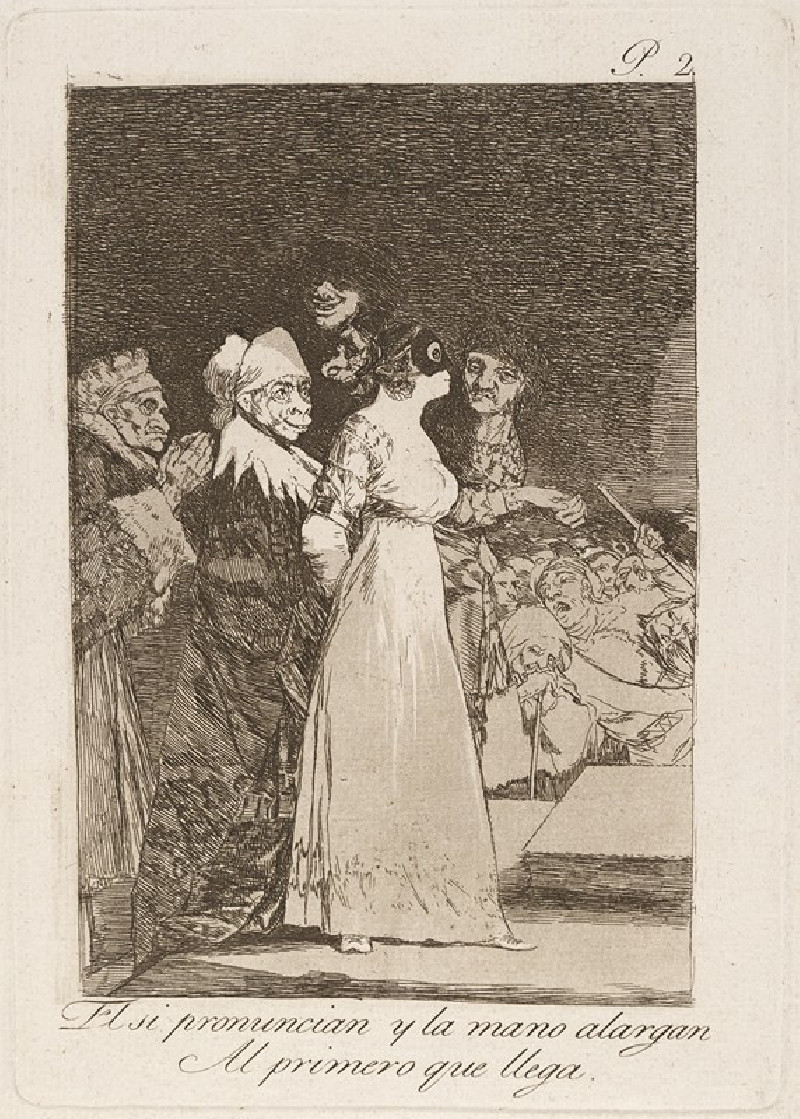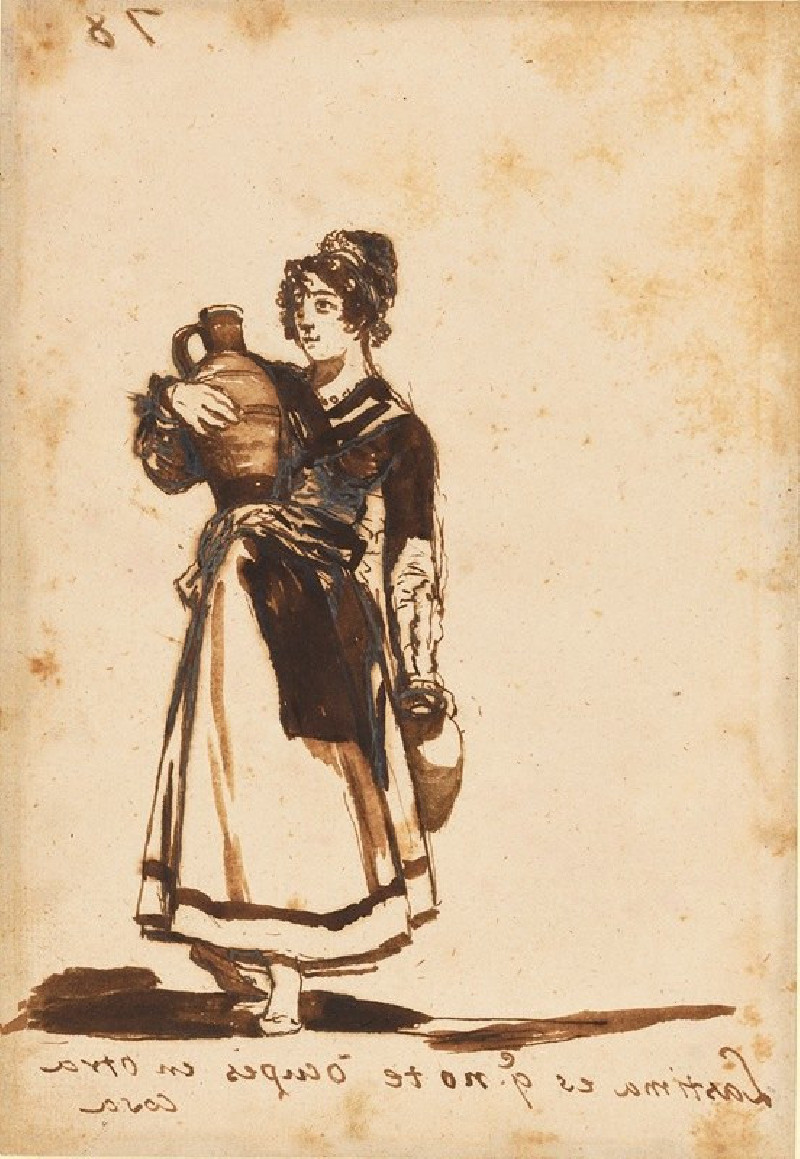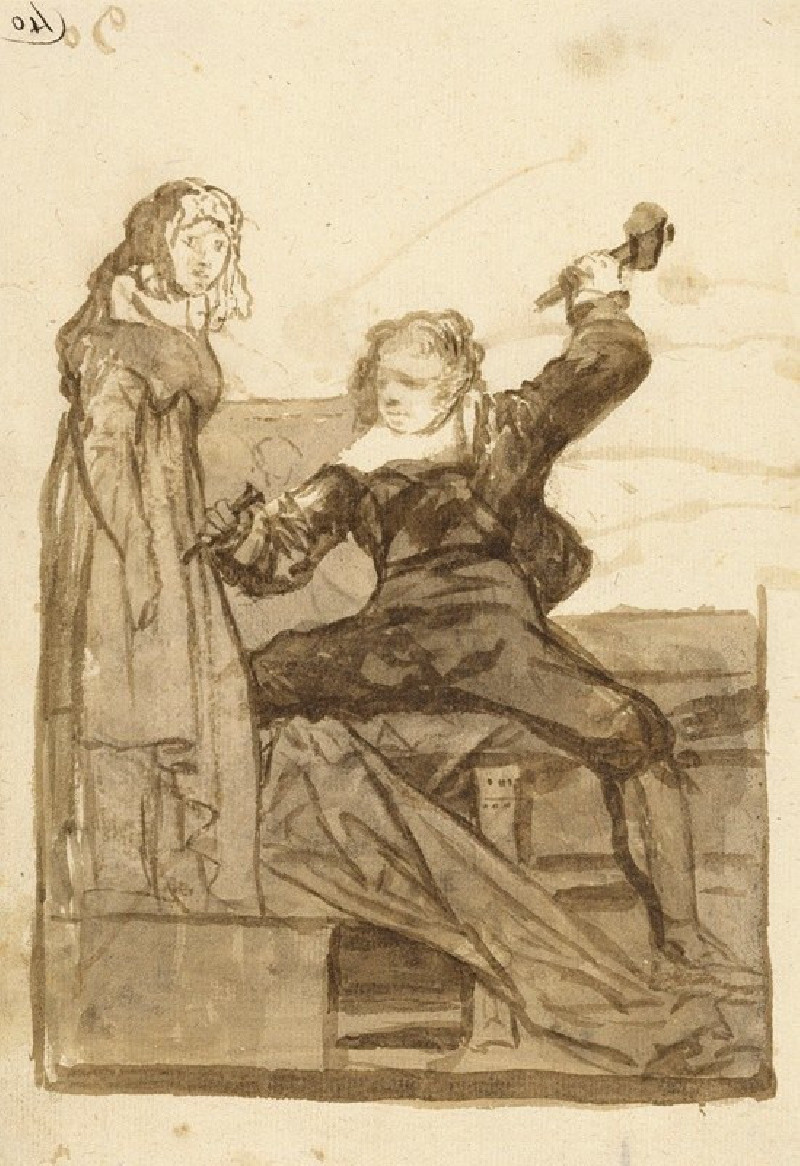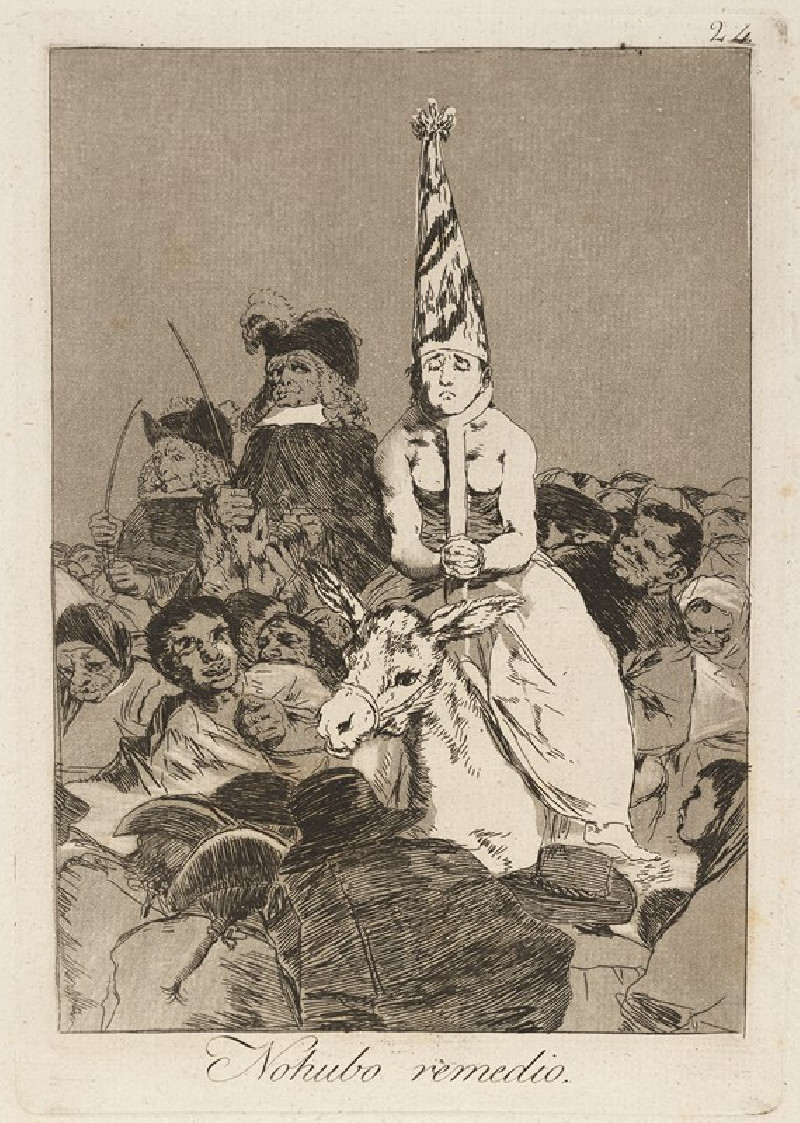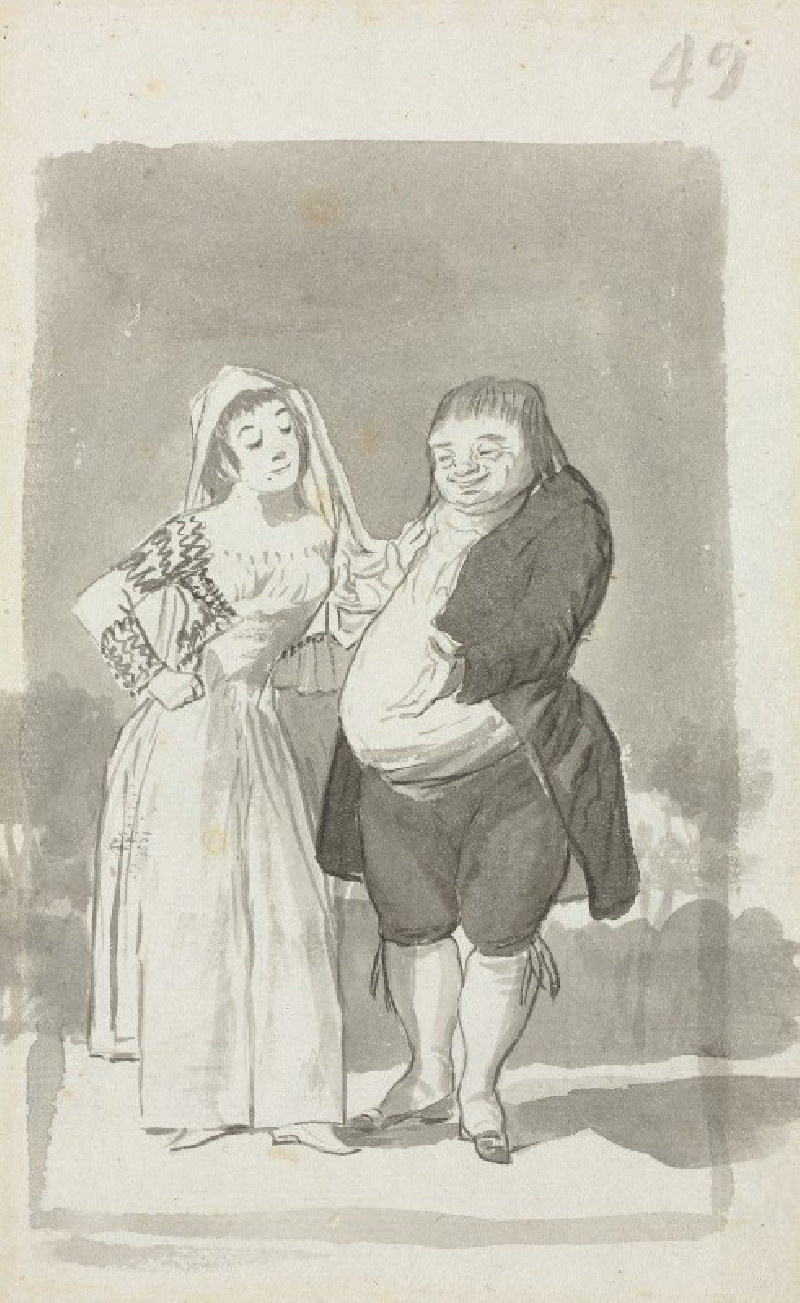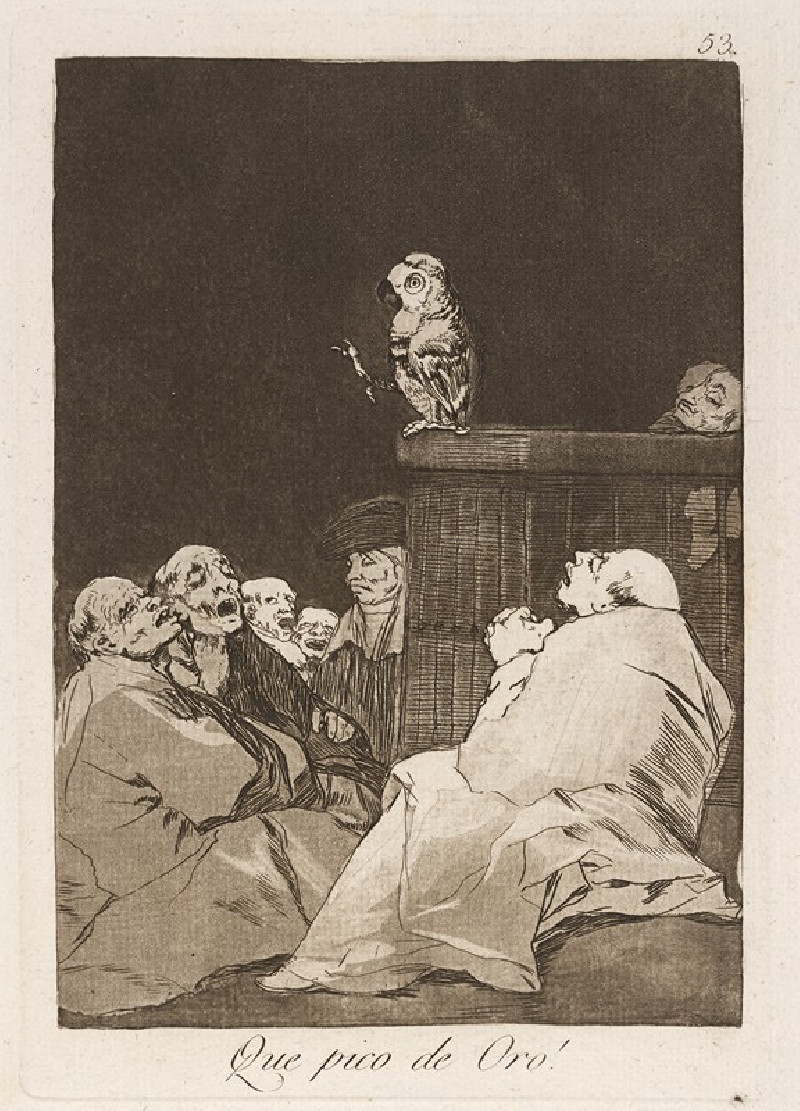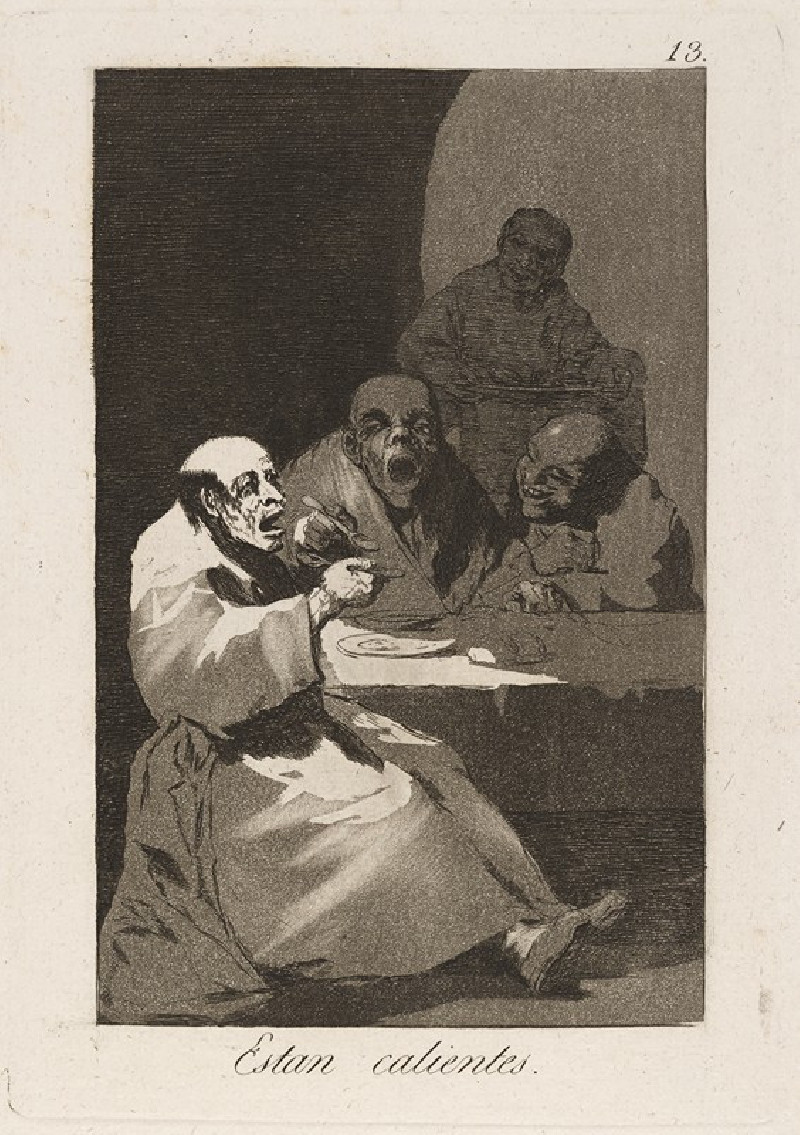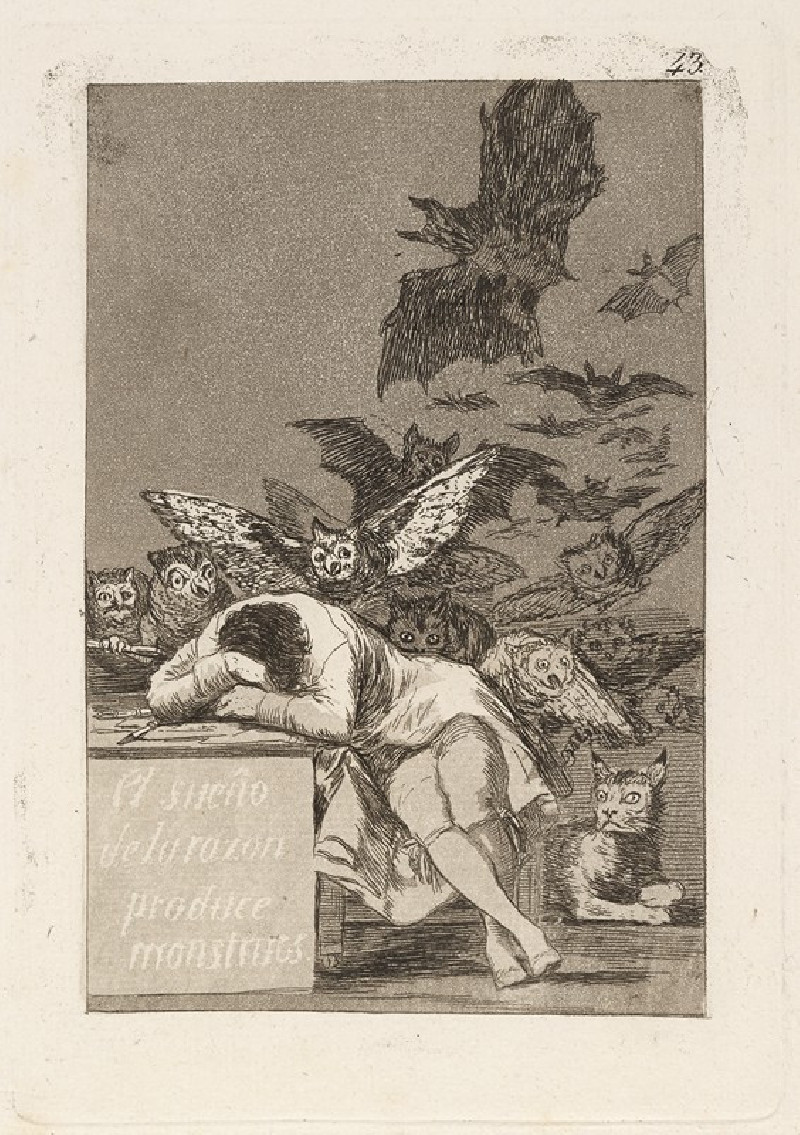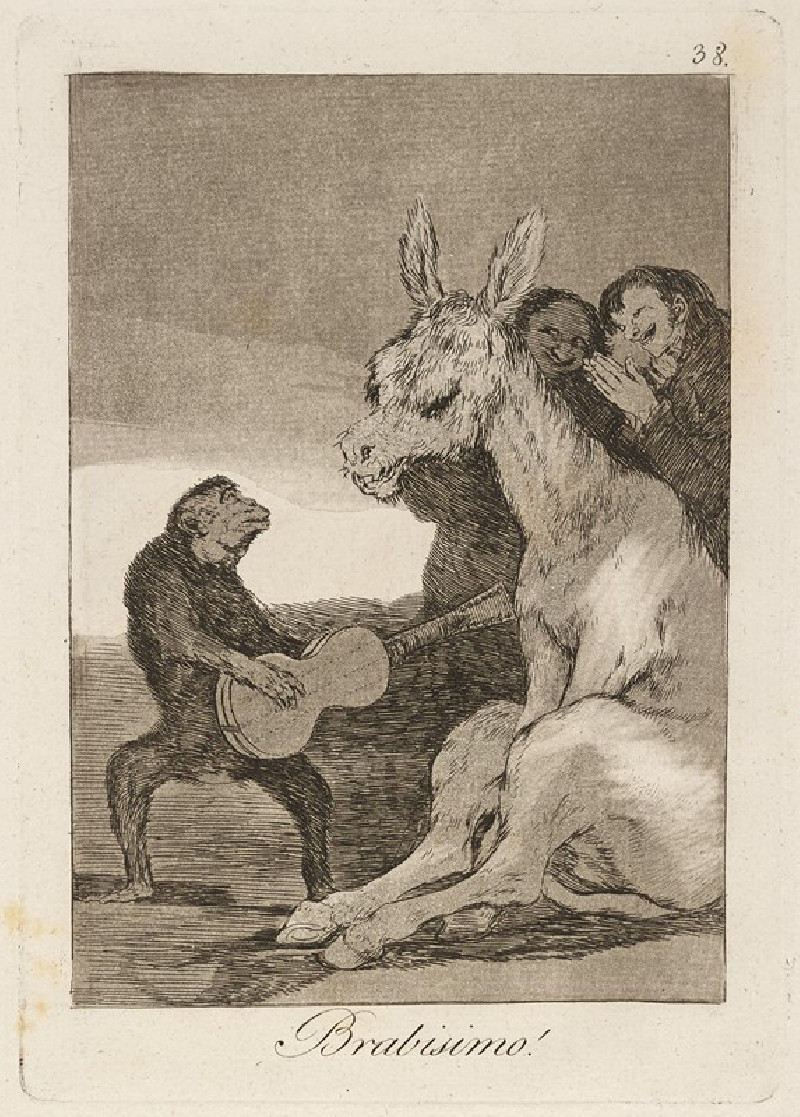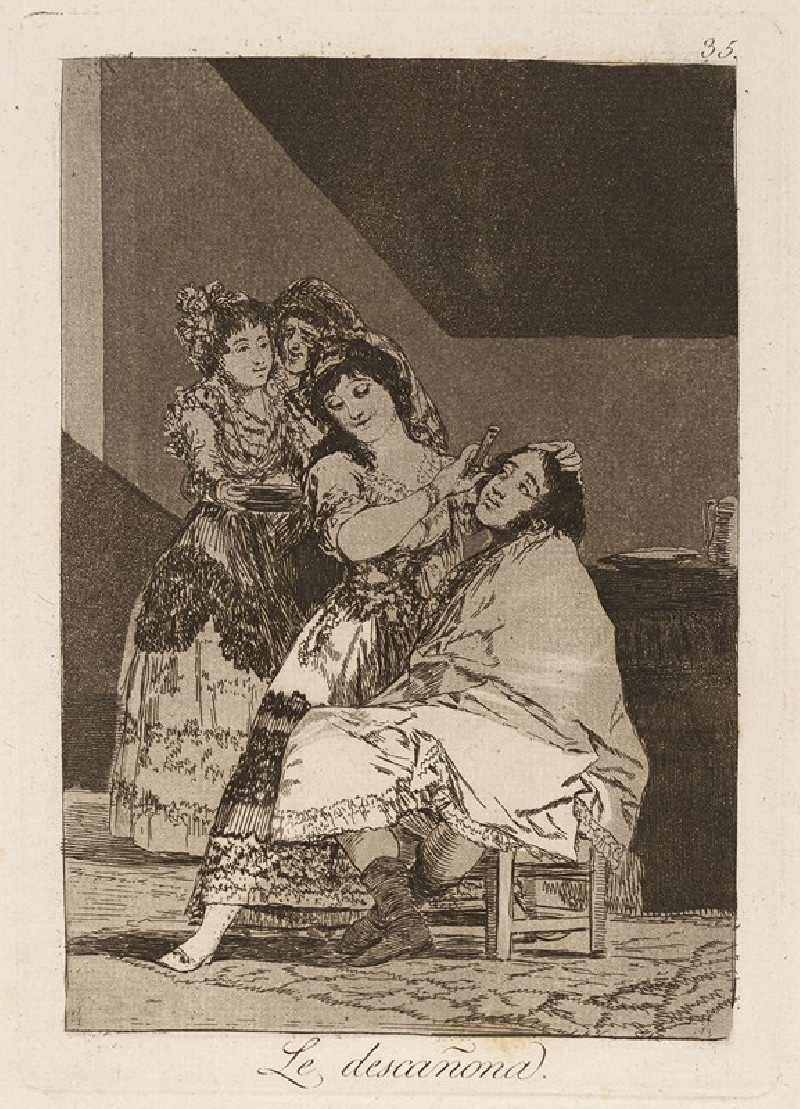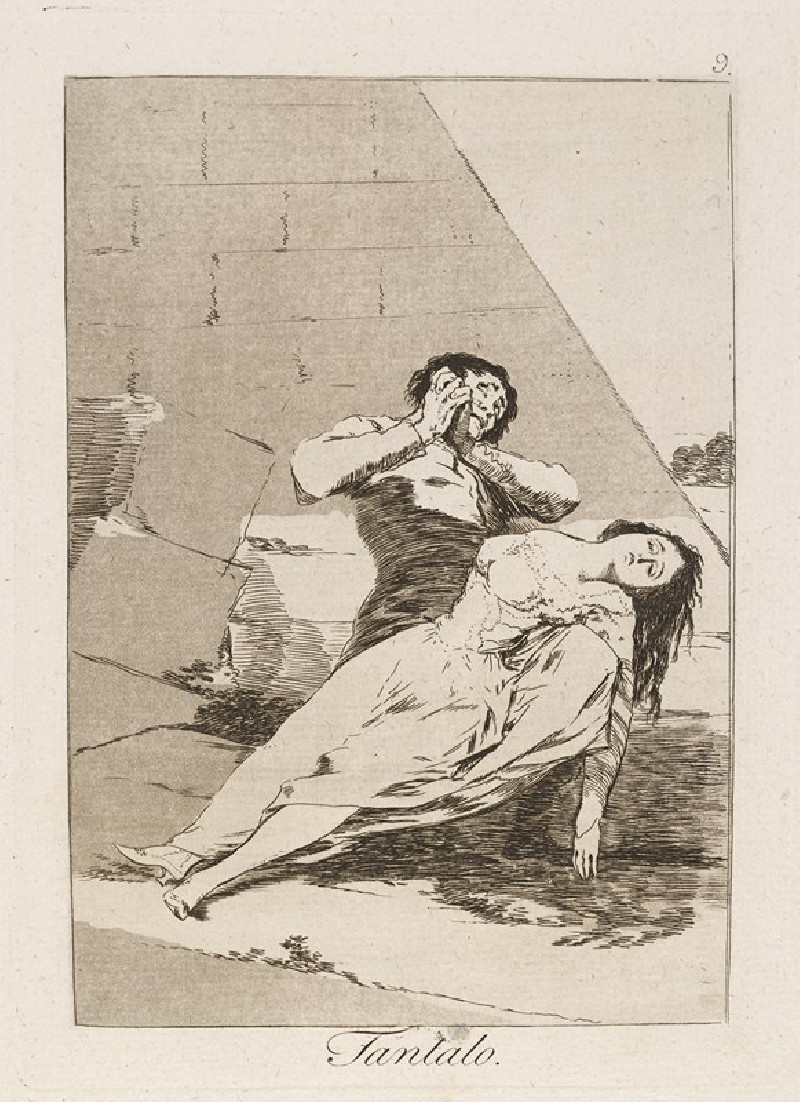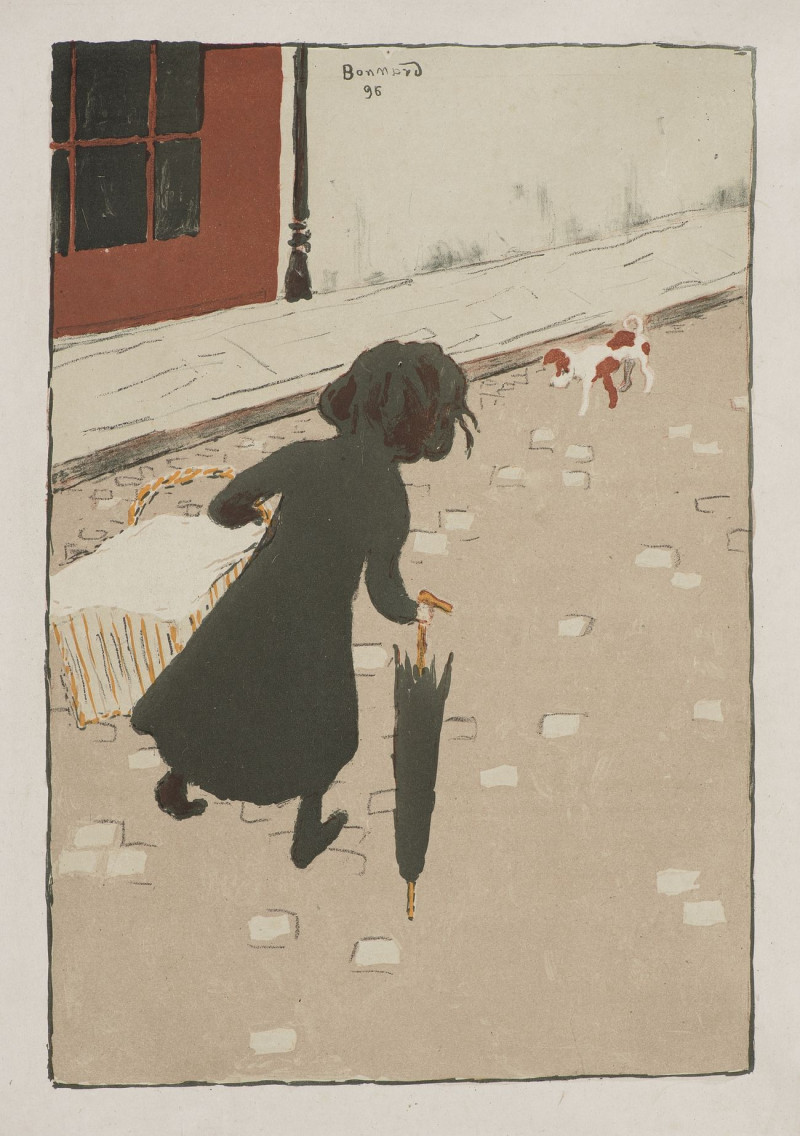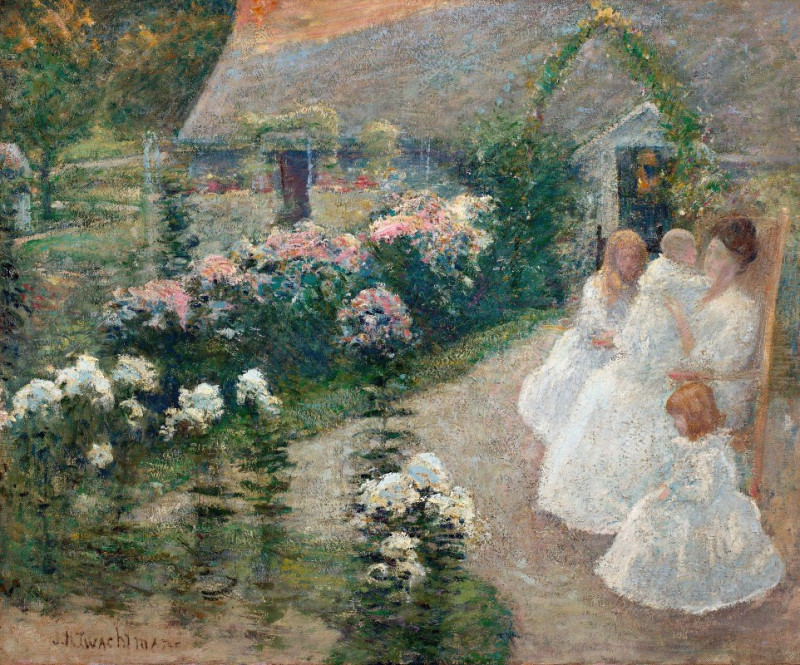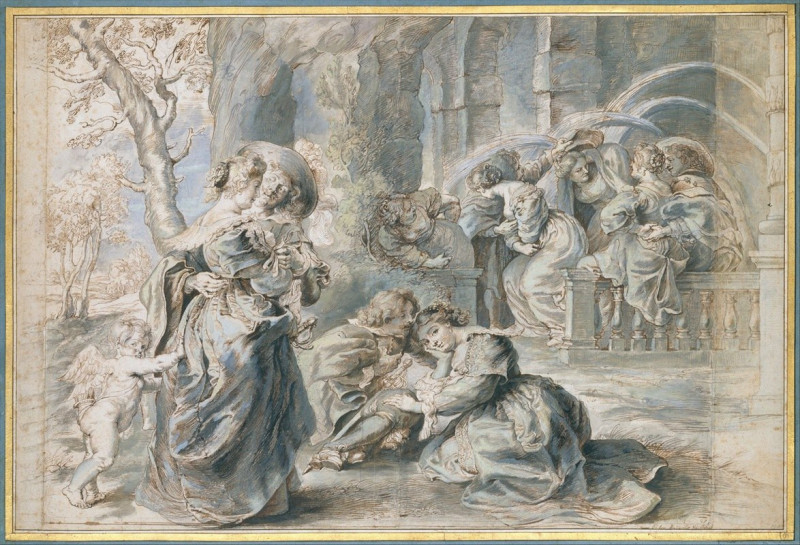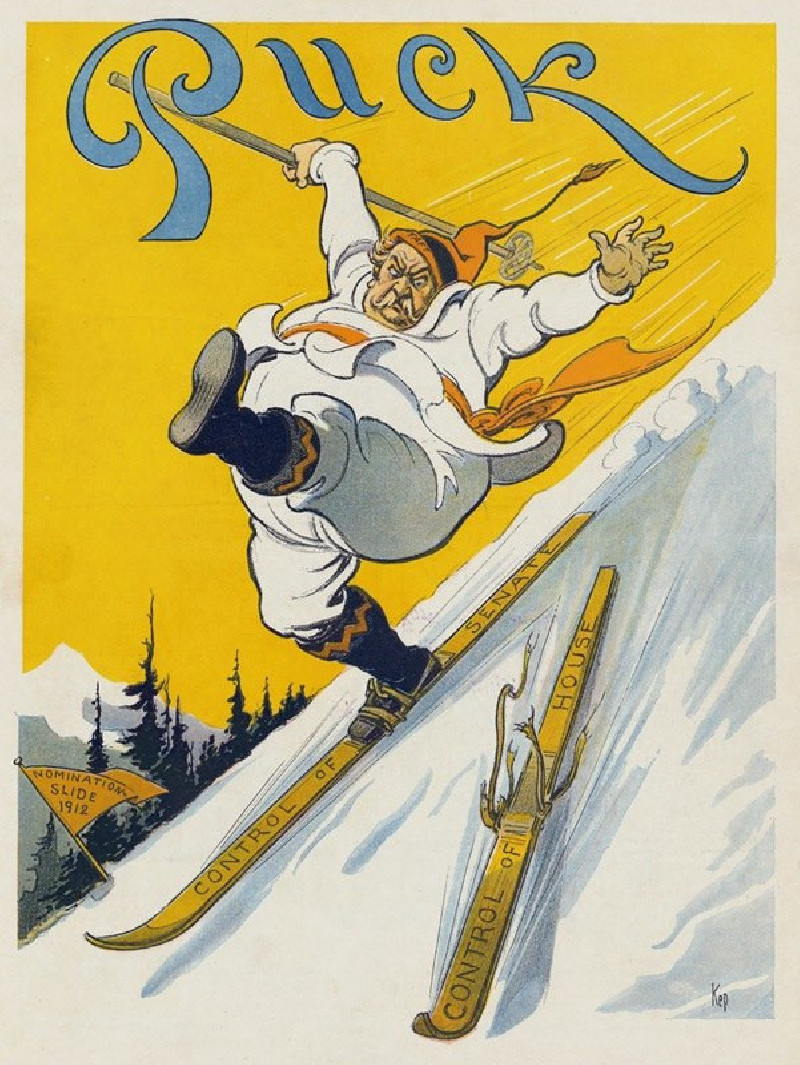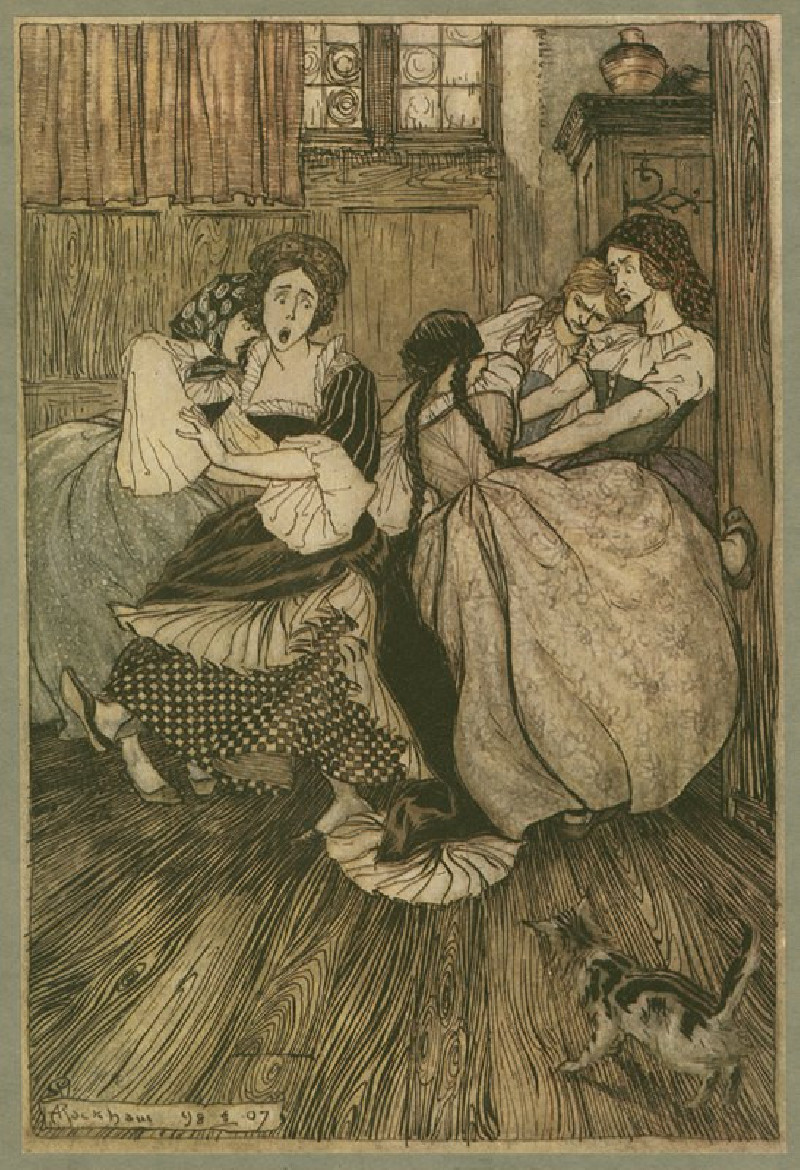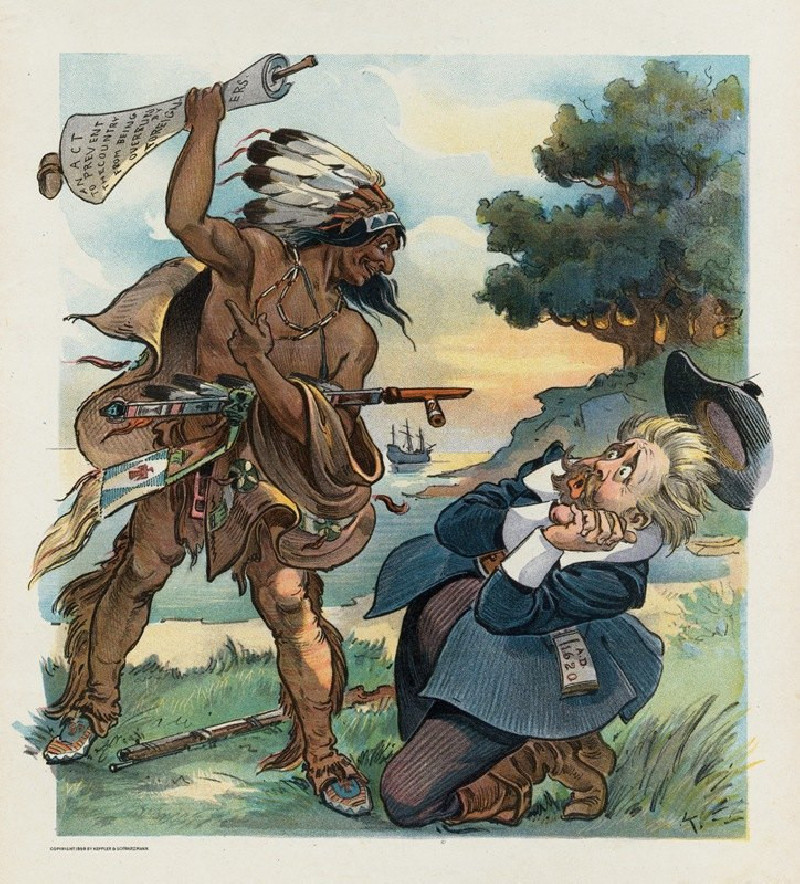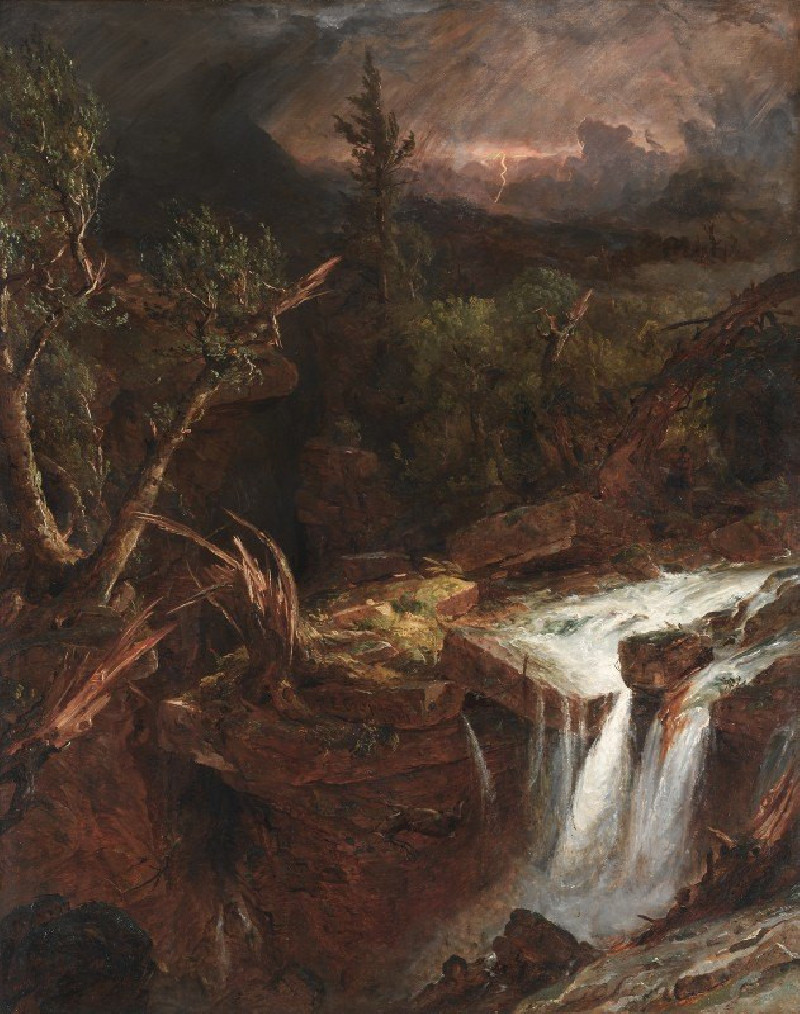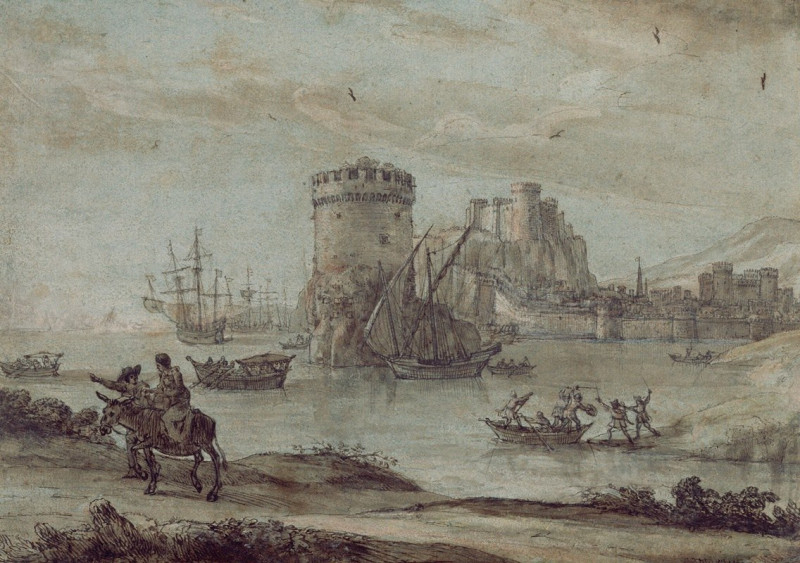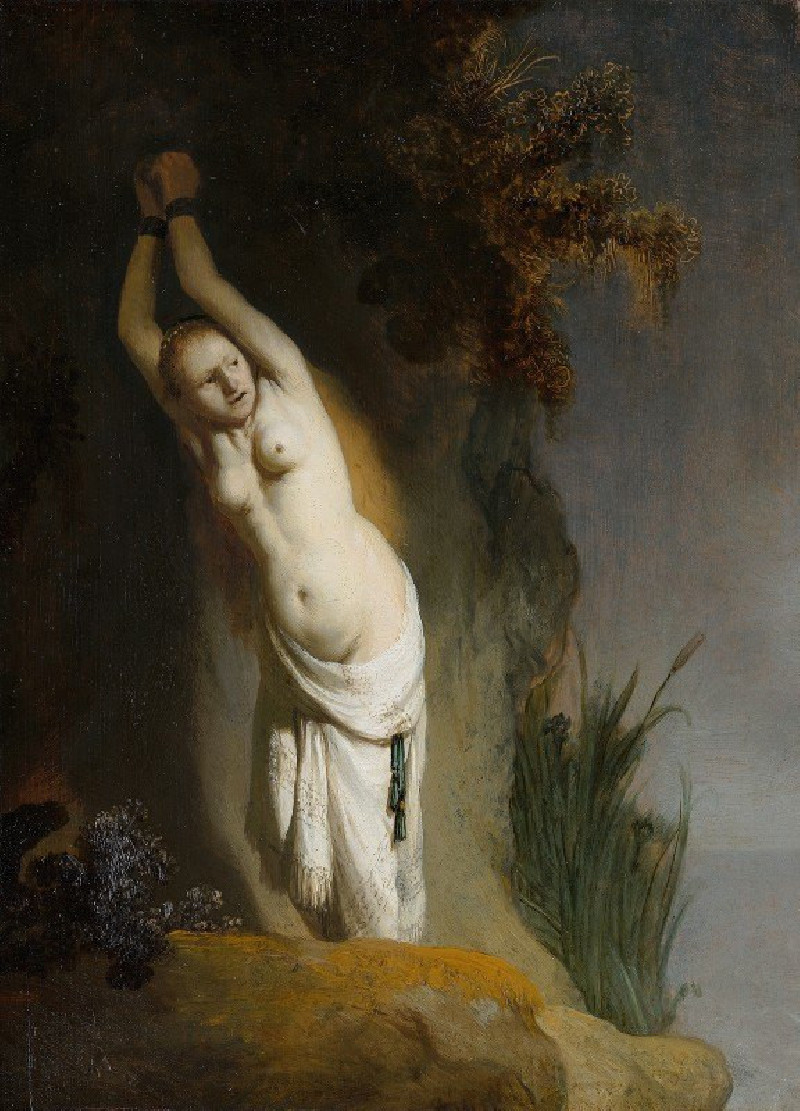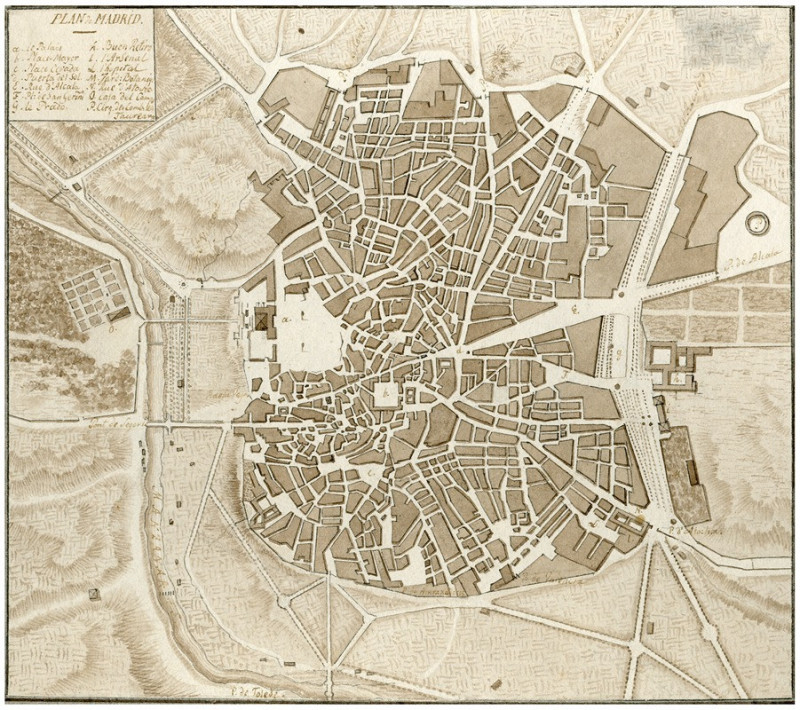Duendecitos. (Hobgoblins.) (1796-1797)
Technique: Giclée quality print
Recommended by our customers
More about this artwork
Francisco de Goya's etching "Duendecitos" (Hobgoblins), created between 1796 and 1797, showcases Goya's mastery in depicting the supernatural and eerie themes with poignant intensity. This evocative artwork is part of his famed series of prints exploring folkloric and fantastical subjects that vividly portray the darker elements of the human psyche and societal superstitions.The image presents a trio of grotesque, goblin-like figures, each exuding a distinct character and unsettling aura. The central figure reaches out hauntingly with elongated fingers, its face twisted in a macabre grin that both repels and fascinates. To his right, another figure faces him, holding a cup with a similarly disfigured expression, suggesting a moment of eerie communion or dark celebration. On the left, a smaller figure, hunched over a container, completes this supernatural gathering. Their exaggerated features are rendered with exquisite detail, highlighting Goya’s skill in using light and shadow to create mood and depth."Dundecitos" is a prime example of how Goya delved into the world of the uncanny, critiquing and reflecting upon the fears and irrational elements of society through his art.
Delivery
Returns
Francisco José de Goya y Lucientes (30 March 1746 – 16 April 1828) was a Spanish romantic painter and printmaker. He is considered the most important Spanish artist of the late 18th and early 19th centuries. His paintings, drawings, and engravings reflected contemporary historical upheavals and influenced important 19th- and 20th-century painters. Goya is often referred to as the last of the Old Masters and the first of the moderns.

